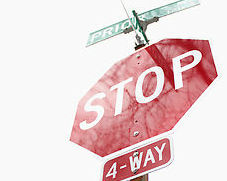Thanks to the Residential Street Vitality Program, a city beautification initiative, more than 90 stop signs have been replaced with artistic versions inspired by the natural world.
RSVP curator Marcus Young hired local artists Lisa Elias and Brad Kaspari to design the sign posts. The point of the project is to make people notice the art in the ordinary, but it wasn’t easy making the public art a reality.
“Being a public artist, there are very few opportunities for us to actually change out there,” Elias said. “Stop sign posts was something that took quite some time to work with the city engineers (and) city attorney.”
St. Paul’s art ordinance requires 1 percent of capital improvement costs to be spent on public art. The city budgeted $297,000 to public art this year, according to the Star Tribune. The sign posts cost about $110,000 in total, including installation.
“I appreciate living in a city with such simple yet rich expressions of creativity and beauty,” justice and peace studies professor Mike Klein said. Klein does not think the cost of the stop signs is a detriment. “We can address inequities, violence and injustice while at the same time growing our culture to promote human flourishing and, in both ways, create the future we want to see.”
Junior Anna Rosenthal said she appreciates the art but thinks it’s unnecessary.
“The stop sign has a specific purpose: To keep people safe and slow traffic down,” Rosenthal said. “I think that the original simple design completes its purpose.”
The city has only replaced damaged sign posts and sign posts on newly reconstructed streets and plans to continue the project wherever the signs need replacing. The eventual goal of RSVP is to reach every street in St. Paul with public art.
Elena Neuzil can be reached at neuz3833@stthomas.edu.



